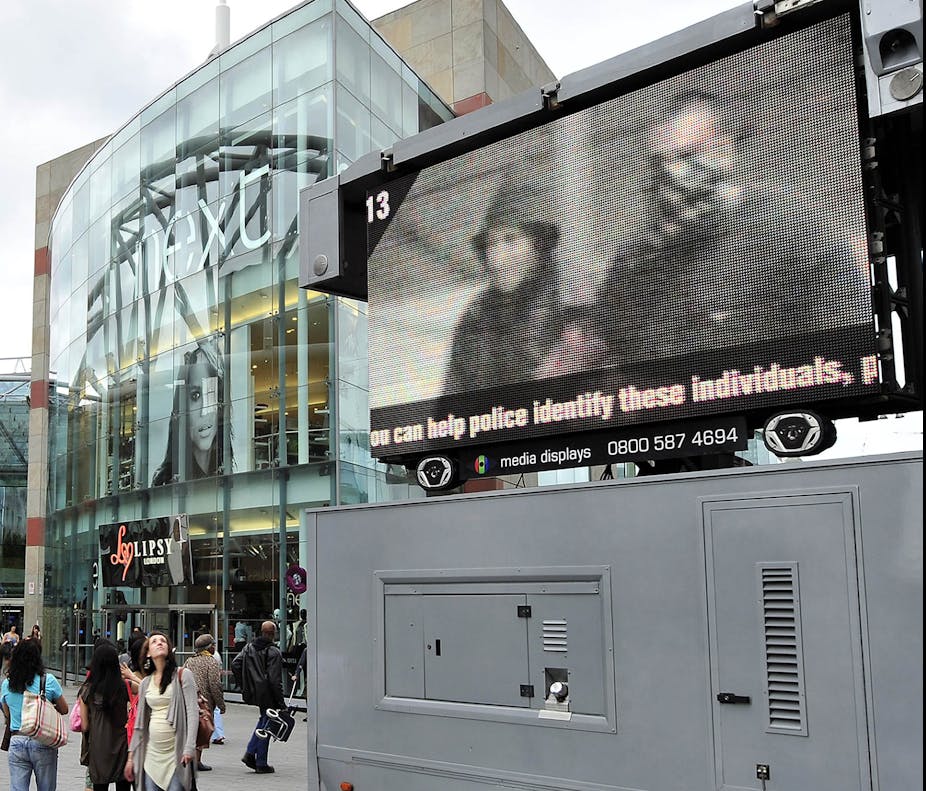There’s a colourful and evocative term among regular users of social media: “headdesking”.
It’s what you do when somebody says or does something so stupid that your instant reaction is to smack your head on the surface of your desk, repeatedly.
David Cameron’s thought bubble (let’s be charitable and call it that) in the UK parliament on Thursday, in which he said it might be a good idea to shut down social networking services if there were to be a repeat of the riots that have rocked Britain, is one such moment.
It is, to be blunt, just staggeringly dumb.
Where do we even begin?
Consider, for example, the fact that Cameron, along with just about all the other leaders of the Western world – you know, we who claim to believe in freedom of expression – lauded the role of social media in the “Arab spring” uprisings in Tunisia, Libya, Egypt, Yemen and elsewhere.
But now he wants to shut Twitter and Facebook down, just because someone, somewhere might use them to plan criminal activities? You must be joking.
By the same reasoning, why not take out the entire Internet and phone network as well?
Just a couple of years ago, Hillary Clinton lobbied Twitter to reschedule a planned service outage, because it was being used so effectively to organise protests following Iran’s blatantly corrupt presidential elections. The UK, too, was a strong supporter of the unsuccessful “Green Revolution”.
Cracking down on social media at home while promoting it as a tool for democracy abroad simply doesn’t make sense.
The bitter irony of recent events certainly wasn’t lost on the Ahmadinejad regime, which mischievously called on the British government to “listen to the rioters’ demands”.
And even if social media was being used to some extent to coordinate rioting and looting, to shut down these networks altogether would be an overreaction of such gigantic proportions that it could not help but do much more harm than good.
Over the past days, social media was used just as much – no, in fact, considerably more – to report on the riots, to inform locals about which areas were safe, and to coordinate the community-led cleanup, than they were to plan criminal activity.
A shutdown would also block these uses, and the rioters would simply continue much as they started, as a disorganised mob.
David Cameron could know all this himself, of course.
A quick first-hand look at Twitter would have told him a few things.
First, he would have learned that it might be advisable to interrupt his Tuscan holiday several days earlier than he did.
Second, he would have seen that the vast majority of social media users were just as dismayed by the riots as he claimed to be.
Finally, he would have understood that users were already using these networks to organise a citizen response well before the government response finally ground into gear.
Indeed, the images of looters snapped by bystanders, shared through social media sites, are now themselves used by British police to identify the perpetrators.
And how are the police asking the public to help? Why, through another social media site, of course – the photosharing site Flickr.
This, in turn, is an idea they’ve gleaned from everyday citizens, who had already set up a variety of similar “identify-a-looter” sites – using social media platforms.
But to remain in willful ignorance of these facts was far more politically expedient for Mr Cameron.
It enabled the PM to switch targets – to blame the messenger rather than engage in any real attempt to understand what fuelled these riots.
Let’s be clear here, there is no sensible argument which could be used to condone the violence and looting we’ve seen on British streets over the past week.
But that doesn’t absolve UK authorities from having to do anything they can to understand and explain it.
This is not the place to attempt an explanation of the riots, of course. To do so is a task for an open, robust, and lengthy public debate across British society, and this is beginning to happen.
The Telegraph’s editorial pointing out the parliamentarians now loudly excoriating “youths” for their orgy of looting are the same who had no qualms about engaging in a systematic expenses rort is a good example.
Then there’s writer Nathaniel Tapley’s widely circulated open letter to David Cameron’s parents, which turns the establishment’s rhetoric on itself. Many others will offer their own views.
Cameron’s easy solutions (which show that even in the absence of Andy Coulson, he’s still got that News of the World touch) simply ignore his responsibility to explain.
Shut down Facebook and Twitter during a crisis, build that internet kill switch which can disable non-sanctioned electronic communication altogether when needed, and it’ll all be OK – that’s the fairytale he’s trying to sell.
It’s time to headdesk again.
We can hope, with some justification, that few Australian politicians would be tempted to try the same, though – and that the Australian public would be even less likely to buy it.
In the Queensland floods, during Cyclone Yasi and in the aftermath of the earthquakes in Christchurch, we’ve already experienced first-hand the significant role social media can play during times of crisis.
As a result, a range of efforts are now underway to find better ways not of shutting down social media, but of using them during crisis events.
Such efforts will enable authorities to respond more quickly and directly and inform the public of threats and disturbances in their local area more clearly.
They’ll offer yet another channel for the public to receive vital information, but also to inform emergency services of the situation on the ground.
With more such systems in place, and with better, not worse, social media coverage of events available to citizens and authorities alike, perhaps there could have been a faster response to the London riots, too.

